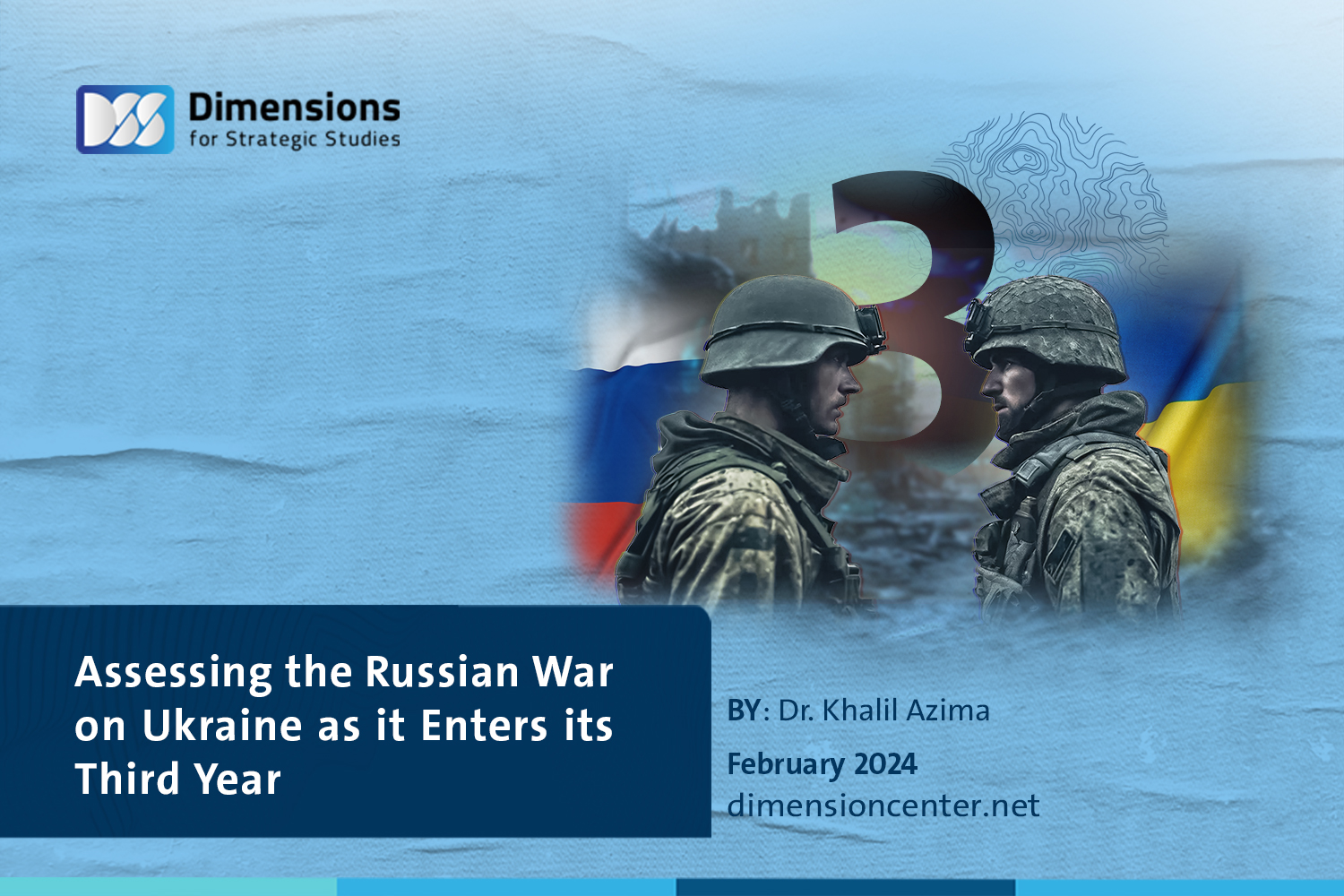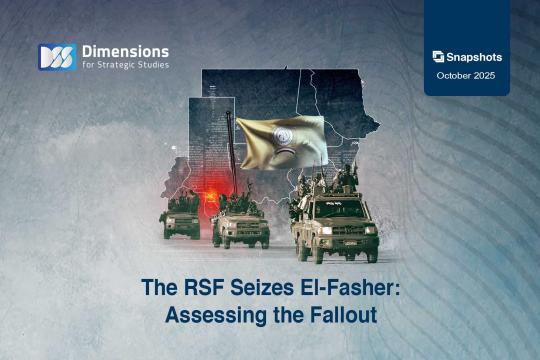
Assessing the Russian War on Ukraine as it Enters its Third Year
2024-02-234649 view
Download PDF
Abstract
As the Russian-Ukrainian war entered its third year, the Russian army had not achieved the goals announced by the Kremlin at the beginning of the invasion. Rather, it was continuing to carry out major combat operations in the Donbass region and southern Ukraine.
The United Kingdom, in particular, has strongly backed Kyiv from the start. The two quickly signed a major security, intelligence exchange, military training, and defense manufacturing deal, which is valid until such a time as Ukraine joins NATO. The UK also extended the largest package of defense aid to Ukraine since the beginning of the war, followed by similar moves by France and Germany.
Over the past two years, Ukraine has also received significant economic and military support from the European Union, and despite the EU’s previous commitment to send financial, humanitarian and military aid, the continuation of this commitment is subject to the whims of the European electorate and the potential rise of populists.
The United States under President Joe Biden has acted as the leader and driver of NATO in the face of Russian aggression, but again, the continuation of this will depend on the outcome of the US presidential elections this year. There are already worrying signals from the camp backing former president Donald Trump that if he wins back the White House, he would reverse this policy. Therefore, even given the current close cooperation between Europe and the Americans over military and security issues, one cannot rule out a scenario in which both EU and US military support for Ukraine dry up.
Meanwhile, the situation on the front line in Ukraine has deteriorated significantly. Since the Ukrainian counterattack in the south, Russian forces have taken the initiative and are trying to advance in several directions at once, despite the poor weather. The front lines have reached a standstill, and it is unlikely that either of the two countries will be able to achieve a breakthrough in the foreseeable future. Yet neither Moscow nor Kiev are currently interested in negotiations to end the war or even enter a state of frozen conflict, meaning hostilities will likely continue for a long time to come.
Introduction
On February 24, 2022, Russia attacked Ukraine by land and air along their common border. Belarusian territory was also used to attack the Kyiv region, with the aim of seizing the capital. In the south, the Russian army occupied part of the Zaporizhia and Kherson regions, as well as the northern areas of Kharkov, Sumy and Chernihiv.
Russian President Vladimir Putin has described the invasion as a “special operation.” Initially, its goal was defined as the “demilitarization and de-Nazification” of Ukraine, and later the “protection” of Donbass. Russian officials said it would be a quick operation not lasting more than a week. In September and early October 2022, Russia attempted to annex the partly occupied regions of Zaporizhia, Kherson, Donetsk and Luhansk.
Ukraine and the West have declared these actions illegal. on October 12 of the same year, the United Nations General Assembly approved a resolution condemning Russia's attempt to annex the occupied territories of Ukraine.
As the war drags on, fundamental changes are taking place in the security, military and political situation in Europe, the Middle East and the world. Ukraine and its armed forces constitute almost the only insurmountable obstacle to Russian military expansion in Europe and other regions.
Ukraine has carried out targeted strikes on Russian military facilities, and hit back at the attacking forces with all their strength. This has achieved some success, leading to the removal of the Russian Black Sea Fleet from the Crimean Peninsula and the launch of a sea transport corridor for the export of grain and other goods from Ukraine. The country has also filed a lawsuit against Russia at the International Court of Justice, which issued an interim ruling ordering Russia to stop hostilities in Ukraine. The Kremlin has not responded.
The International Criminal Court in The Hague is hearing a separate case regarding war crimes committed by Russia in Ukraine. On March 17, 2023, the court’s judges issued a ruling an arrest warrant for Putin himself.
Russia’s armed aggression is an existential issue for Ukraine. But global and regional security structures, especially the UN and the Organization for Security and Cooperation in Europe, have proven that they are unable to stop it through political and diplomatic means and restore the territorial integrity of Ukraine within its internationally recognized borders. Thus, Ukraine is forced to do everything it can to achieve this by military means.
Conclusion
It is difficult to predict the fate of the “security guarantees” provided to Ukraine or their guarantees of military-technical, political and financial support. It is clear that the value of these guarantees depends little on the content of the agreements themselves, which are anyway general and subject to broad interpretation. Rather, it will depend on political developments in the countries that have signed them.
Russia is aware of its technological limitations compared to the West, and therefore its approach to this strategic confrontation is to focus on hybrid tools. The hybrid approach adheres to a logic that is not linear, but rather situational. Rather than moving from Step A to Step B and so on, Moscow acts on the basis of the circumstances. This makes it difficult to predict its next move, and in turn keeps alive the risk of new regional conflicts and other security threats. This has increased fears of war elsewhere in Europe, as evidenced by preparations for war in a number of European countries.
Report in Arabic here: (Click here)





